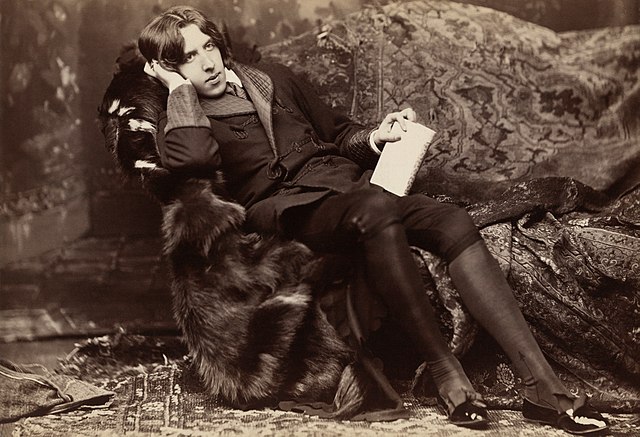
Any Dubliner knows that it is nearly impossible to take a short walk through the city without passing by a statue of Oscar Wilde or seeing one of his aphorisms on a wall. Wilde left Dublin for Oxford at just twenty and would divide the rest of his life between England, France, and America, but we like to think that those first twenty years of his life were the most formative, impacting everything he later took on in life. It is less surprising that he has a festival than that the festival is only in its second year. Oscariana celebrates “the birth, life and legacy of Oscar Wilde” and offers a mix of film screenings, shows, tours, and exhibitions.
Trinity has taken the opportunity to show an exhibition titled Oscar Wilde: From Decadence to Despair in the Long Room to coincide with the festival and Oscar Wilde’s birthday. The exhibition was first shown in 2017, and this time, it will stay until 29 January 2025. The exhibition has been minimally promoted, perhaps for the best, as it prevented anyone but myself from being underwhelmed. Most visitors to the Old Library are understandably there for Gaia, the illuminated art installation of the Earth that ironically overshadows the Oscar Wilde exhibition. Less photogenic and not very spectacular, the exhibition nonetheless features a handful of interesting collectors’ items from Trinity’s public collection of Oscar Wilde letters, photographs and memorabilia. Wilde’s favourite place to study was the Old Library, and our different experiences are made starkly apparent as I queue for admission before being ushered along the building until I finally end up in the gift shop.
I would direct anyone who has already been to the Old Library to the accompanying online exhibition, which features more items. The online exhibition is divided into “the rise”, “the fall” and “the exile”. The narrative of a promising young and well-educated man who eventually lets fame get to his head is how people first get to know Wilde and the angle through which his life is usually told – the festival is no exception. The collection features a range of items that did not belong to Wilde but used his visage to promote them. While celebrity culture may have taken on new forms with the invention of social media, it is no new phenomenon. It is easy to fall into the trap of thinking that, surely, Wilde never enjoyed as much fame as he does today, but that couldn’t be further from the truth. Alongside advertisements, the collection also features photos of women close to Wilde. This ties in with another of the festival’s events, a lecture titled “Wilde’s Women”, delivered by Eleanor Fitzsimmons, the author of a book by the same name.
The Oscar Wilde House, which also takes part in organising the festival, similarly places Oscar Wilde in the context of the people who surrounded him. Located in his childhood home, the guided tour led by creative director Martin Burns retells the lives of Oscar Wilde’s parents, William and Speranza, emphasising that they were famous long before Oscar was born. The tour provides a perspective that is often overlooked, showing how Wilde was set up for success from birth. In a homage to Speranza’s famous salons, Oscariana also streamed an event recorded last year titled “Speranza’s Salon”, a recreation of a nineteenth-century salon with live music and poetry readings. The guided tour is promoted as a tour of “tales of heartbreak, tragedy, intrigue, court battles and scandal”, dramatising both the lives of Wilde’s parents and his own. This did not necessarily take away from the quality of the tour, as Burns’s extensive knowledge and knack for storytelling made it fun and engaging. But it begs the question of how Oscar Wilde’s legacy is remembered.
I do not doubt that Oscariana will continue to grow in popularity and establish itself alongside other literary festivals like that of Wilde’s contemporary, the Bram Stoker Festival. In some respects, it tries to rewrite the narrative by bringing the people around Wilde into the spotlight, and in this, it succeeds. Still, when it comes to Oscar Wilde himself, the festival regrettably focuses only on his life, not his work. Celebrity culture may have taken on a different face today, but in many ways, it is the same as it was in Wilde’s lifetime. Combine our morbid curiosity about celebrity scandal with our fascination for stringent Victorian social norms and it is easy to see why Oscar Wilde’s life continues to intrigue us.






